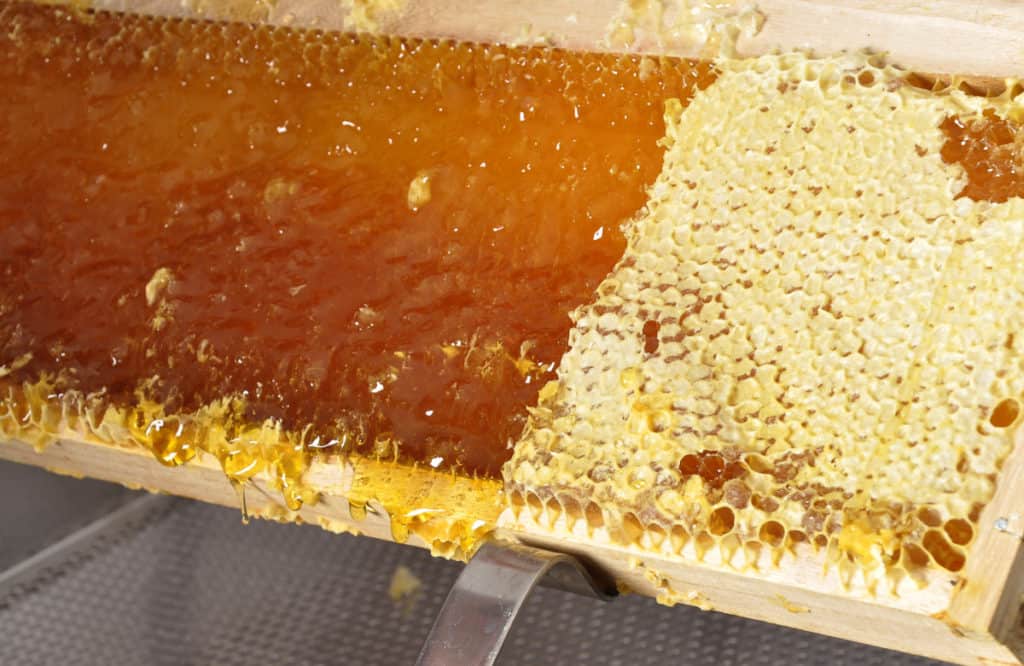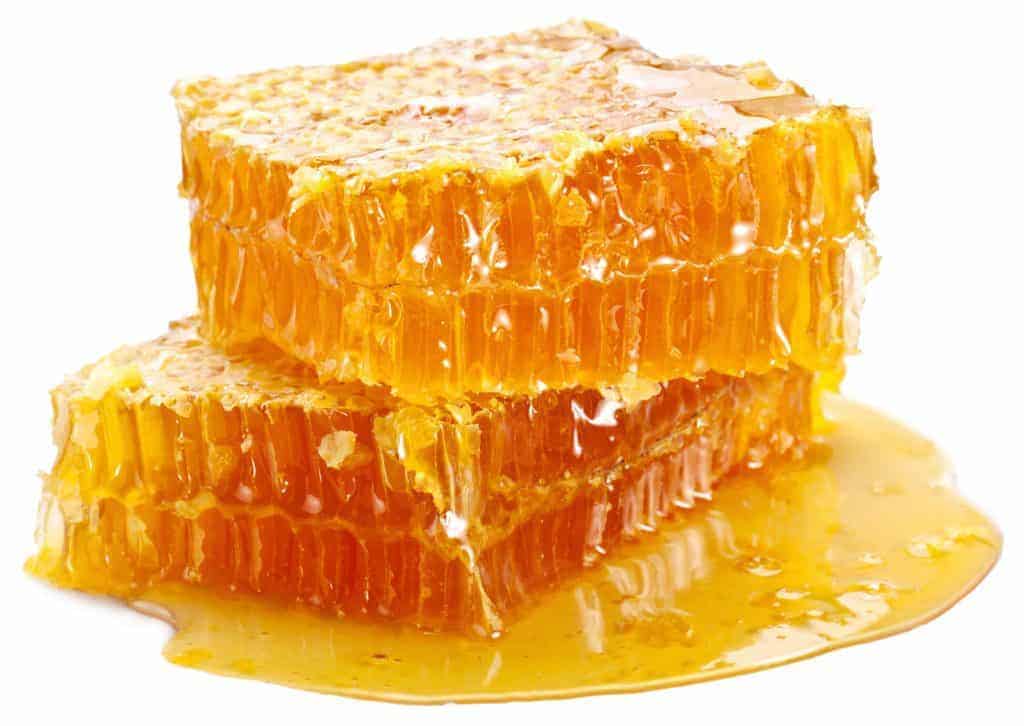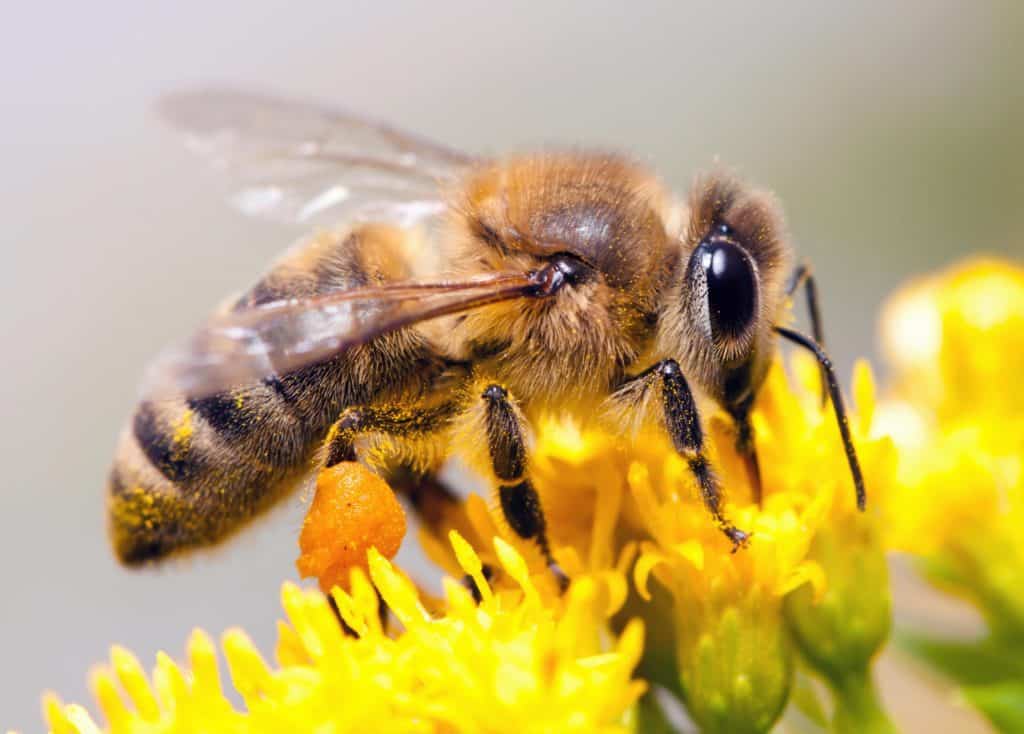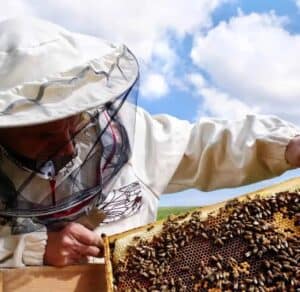How Long Does It Take For Bees To Make Honeycomb? Hate Waiting?
Honeybees are such amazing and versatile creatures. The way they can produce such efficient combs to store their honey, nectar, larvae, and pollen is quite a marvel.
How long does it take for bees to make honeycomb? On average it can take between 7 days to 2 months for honeybees to make their honeycomb. It depends if they are a new colony or established, weather conditions, and nectar flow. A strong colony can build 10 frames in 3 days during a strong nectar flow.
It’s remarkable how bees have adapted over millions of years to produce the most efficient hexagonal comb shape for their hives. Let’s explore the different aspects of the honeycomb, how its built, and just how productive honeybees can be.
How Long Do Bees Take To Draw Their Honeycomb

The time it takes to build comb will depend on the size of the honeycomb, the size of the bee population, and the amount of nectar brought into the colony. Other factors are whether the bees were given starter frames and if it’s a new or established colony.
On average it will take between 7 days to 2 months for bees to produce comb and fill it with honey. But a strong established colony, during a strong honey flow, can draw out a full 10 frame deep box and fill it with honey in as little as 3 days. Sometimes even quicker, in less than 24 hours.
Bees require a very large amount of nectar to produce comb and fill it so quickly. It takes around 40 pounds of nectar for bees to make 1 comb weighing 1lb. This is before they even begin to fill the cells with nectar, or honey.
Since wax is the basis for honeycomb, bees will consume around 6-8 pounds of honey to produce only 1 pound of wax. Also, they require around 5 pounds of nectar to produce 1 pound of honey.
And if you want more info about honey production, hold up for a bit, I wrote an article all about how long it takes for honeybees to make honey that I encourage you to read!
How Does a Bee Make Honeycomb

The simple answer is that it’s made from honey. The honey is consumed, digested by the bees and converted to wax through a series of glands on the bee’s abdomen. A honeybee has 8 wax producing glands.
Bees then secrete the wax through pores on their abdomen and it collects in flakes on their bodies. Then they operate on a buddy system and chew the wax flakes off each other. They continue to chew the wax mixing enzymes from their saliva and softening the wax until its formable. Then they add the wax to the comb that is being built.
In the wild bees create ‘U’ shaped comb that hang in flat disks. The wider portion of the comb is near the top to securely attach to a tree or rock crevice. The comb narrows down the further away from the attachment area to put less strain on the comb.
In beekeeping however, the standard Langstroth hives usually include frames already molded into hexagonal shape. The bees take the hint and will make perfectly framed brood, nectar, and honey cells.
Bees only produce the most wax when they are 10-20 days old. After this age the bee’s wax production begins to lessen. The ideal temperature for the formation of wax, and to keep the queen warm, is 90 degrees Fahrenheit or 32 degrees Celsius. It is necessary to control this temperature to keep the wax formable.
Bees are experts in temperature regulation and control the hives temperature to keep the wax from melting in the summer or getting to cold in the winter. Bees will make a fanning motion with their wings to keep the hive cool during hot days.
And if you want some guidance on selling your honeycomb, hold up for just a bit, I wrote an article all about how much money you can make selling your honeycomb that I encourage you to read!
How Long Can Honeycomb Last

Honeycomb can last for a very long time, but it can begin to crystallize over time if stored at room temperature. Your honeycomb will never spoil if it’s stored properly, and moisture doesn’t get into the container.
Ideally you would store honeycomb in a sealed container or jar at room temperature and store it in the freezer if you don’t like crystallized honey. Now keep in mind, everyone will tell you that honeycomb can last forever, even at room temperature, but realistically after 1-year honeycomb begins to lose its scent and flavor.
The best long-term solution for storing your honeycomb is by freezing it. This way it will last you for many years. A lot of people prefer to eat their honey right from the comb and if you haven’t you should try it sometime.
The combs are made of beeswax and are 100% edible and are just bursting with delicious honey that can be eaten with a spoon. The wax combs are typically chewy and will ball up in your mouth like gum. Some people will just spit out the wax while others will just eat it. Beeswax is safe to eat but humans cannot digest it.
The wax has a sticky texture and coats your teeth with a high friction surface that feels weird. The wax doesn’t taste like anything though. As you keep chewing the comb, the consistency will change as the liquid honey comes out. You can also put it on hot toast and the wax melts to make a unique and tasty snack.
It is also better to only consume new comb. Generally, the clearer the wax the more likely its only a year or less old. Therefore, most beekeepers who sell honeycomb, use special frames to facilitate the harvesting of comb honey.
Packaged honeycomb is available in many stores, especially high-end stores that stock an assortment of exotic honey. It’s normally packed in small round pieces or squares about 4 inches across. It is more expensive than extracted honey due to the special handling and packaging required.
How Long Does It Take For Nectar To Turn Into Honey

It usually only takes a couple of days from collecting nectar to producing capped honey, especially during a heavy honey flow. It’s quite the process and for some it’ll seem gross. Bees collect the nectar, mix it with enzymes in their honey stomachs, and regurgitate it into the comb cells. The process of breaking down nectar by enzymes is called inversion.
Forager bees leave the hive and collect the nectar. They return and regurgitate the nectar to the younger house bees. The house bee ingests the nectar and its enzymes also work on breaking down the nectar. The nectar gets passed from house bee to house bee until the water content is reduced to approximately 20% to 23%.
The last house bee will regurgitate the inverted nectar into a cell. The bees will fan it nearly constantly to draw out the water content and get it down to 18 percent moisture level before capping it with wax. To fill a forager bees honey stomach, she will have to collect nectar from 50 to 100 flowers.
Related Questions
Can You Keep Bees Without Harvesting Honey? You can keep honeybees without harvesting honey but its not recommended due to several negative consequences. Your bees won’t have enough room to store excess honey, will become overpopulated, and then swarm. Swarming of unmaintained colonies increases the spread of disease and pests to other healthy colonies.
How many times can you harvest honey in a year? Most beekeepers harvest honey 2-3 times per year/season. Honey is normally harvested between mid June until mid September. How often you harvest depends on your local climate and plant life. Poor weather conditions, disease and pests infiltrating your hives will also affect your harvesting schedule.
How long can you keep capped honey? You should only keep capped honey away from the hive for no more than 2 days. I recommend leaving your supers until you’re ready to harvest. By pulling frames to early, you increase the likelihood of getting bugs in your honey.
If you have no choice, a good option is to simply put your frames in a deep freeze. Once your ready to extract the honey, simply let them thaw for 2 days (sealed – keep bugs out) then extract your honey. This is a more common practice with hobbyists.
How many bees does it take to make a teaspoon of honey? The average worker bee will only produce 1/12th a teaspoon of honey. It takes 12 worker bees to produce a single teaspoon of honey.

Joseph Davis
My goal is to show that anyone can take up beekeeping and it can be a very rewarding hobby. I strive to share my experiences and answer any questions you may have.
